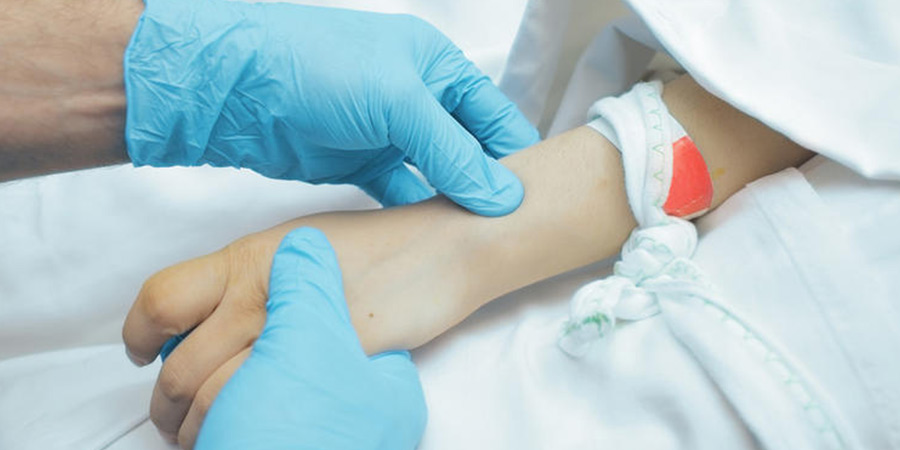How to Best Treat the Sickest Patients in the Hospital
March 20, 2017
In the intensive care unit, it’s all hands on deck — and it needs to be. The ICU treats some of the sickest patients in the hospital, and they require round-the-clock care and critical interventions.
What makes one ICU different from another? Of course, top-notch physicians and nursing staff are required, but some qualities of a high-functioning ICU might surprise you.
David A. Vitberg, M.D., director of the Greater Baltimore Medical Center (GBMC) medical and surgical ICUs, explains the four hallmarks of a high-functioning ICU.
It’s cutting-edge
“At our roots, we never want to become a sleepy community ICU,” says Dr. Vitberg. “We don’t practice the way we did when we all finished our fellowship training. We pride ourselves in adopting the latest practices in evidence-based critical care medicine.”
Additionally, this philosophy goes beyond the practice of medicine into management.
GBMC embraces Lean Daily Management (LDM), a process championed by Toyota Motor Corp. that Dr. Vitberg praises for its ability invoke “real-time, continual quality improvement.” From the ICUs to the loading docks, key success metrics are tracked on whiteboards hung for all to see.
Each day at 9:15 a.m., hospital executives or their team members come through Dr. Vitberg’s medical ICU to monitor status. The charge nurse presents each metric the unit is tracking — red for “not met,” blue for “not applicable” and green for “met.”
“Red is an opportunity for improvement,” says Dr. Vitberg, “not failure.”
It’s by design
GBMC has two 12-bed ICUs — one medical, one surgical — at opposite ends of a hall, plus six additional beds for critical care overflow. The number of beds is similar to units in other community medical centers, which typically have 25 to 30.
However, the compact design — four beds in each corner, forming a circle around the nursing station — is special, and it’s conducive to the kind of high-touch, high-attention critical care that must happen in ICUs.
“Everybody, at any given time, is in plain sight,” explains Dr. Vitberg.
Danielle Tomlinson, RN, an ICU nurse on GBMC’s medical unit, came from another hospital with a massive 42-bed ICU. To her, the design truly makes a difference.
“I really appreciate the closeness and how intimate the setting is because you can really be involved with your health care team,” Tomlinson explains. “Everyone knows who everyone is.”
It’s about teamwork
An excellent physician-nurse relationship is important to the quality of care. “Nurses are the ones doing the heavy lifting,” such as providing medicine and therapies, says Dr. Vitberg. “Without them being equal partners, we couldn’t do anything.”
At GBMC, Dr. Vitberg sees a strong partnership between physicians and nurses — and it’s not just his unit. “I have equal partners in my two nurse managers,” he says. “You see that reflected in the organization, between our chief nursing officer and our executives.”
It’s a family affair
“FICUS — family ICU syndrome — is a real thing,” says Dr. Vitberg. “Concurrently with patients crashing, we have families crashing.” That is, doctors are caring for the patient’s trauma while also tending to the family’s resulting emotional trauma. The stress of having a loved one in the ICU is immense, and the critical care teams in GBMC’s units do their best to manage it.
“Our approach, if a patient is not on isolation precautions, is to bring the entire ICU team into the room, to literally do rounds right at the bedside,” says Dr. Vitberg.
Often in a typical ICU, families and loved ones are kept separate. During rounds, Dr. Vitberg invites families — those who know the patient best — to stay and talk with the medical team face-to-face. It’s a win-win approach.
The all-in-the-family feel extends to the nursing staff, who often build relationships that extend beyond a patient’s stay.
Tomlinson recalls a woman in her 40s who arrived in the ICU with kidney failure, who stayed on and off over the course of about a month. “I connected with her kids. She was my mom’s age, and I was her son’s age,” explains Tomlinson. When the woman’s health was improving, Tomlinson visited her, only to find her clipping coupons. She and the family laughed. “I told her ‘I’d rather see you at the grocery store — anywhere else than here.’”
Laura Lambert - Motiv8




